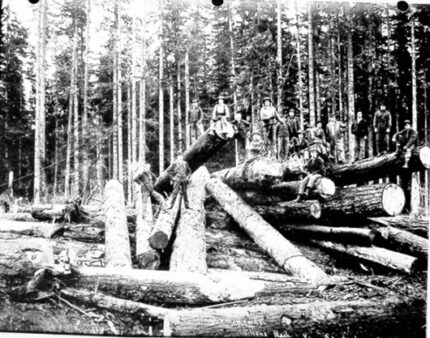For many decades, the heavily wooded areas along the Snoqualmie River and its tributaries provided a substantial income for logging and milling companies . As the lowland timber was removed, the cleared land was used for farming.
During the 1870s, the lumber technology evolved from hand sawing and hewing to small water-powered sawmills. Steam donkeys were commonly used for logging operations. The logging companies dumped their logs into the Snoqualmie River, formed them into booms, and had sternwheeler boats tow them to sawmills downstream in Everett.
Siler logging in Ames Lake
The most prominent logging companies during this boom period included Cherry Valley Logging, headquartered in Stillwater, and Siler logging, based in Ames Lake. Both companies harvested and milled timber in the vicinity, employing many local residents.
As late as the 1920s, there were still many old growth trees in the area east of Redmond. Logging was dominated by the Siler Logging Company. Felled trees were taken north by means of a specially built 25 mile railroad, which ran from Ames Lake to Bromart, just south of Snohomish.
From the mid-1880s until the end of World War II, logging and its related sawmilling was the largest industry on the Eastside.


We still had logging festivals in Carnation when I was a kid in the 1970’s. I remember pole climbing, axe throwing and log rolling in the river.
Thanks for your memories!